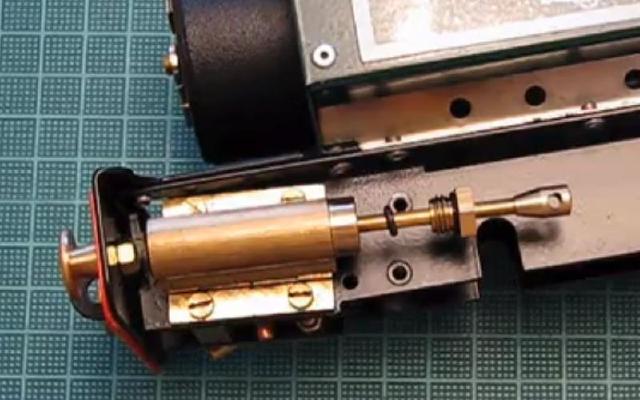The Cheddar Models, IP Engineering, PPS Steam, RWM Steam & Roundhouse Engineering displacement lubricators share a common design, with most having the hole on the underside of the steam pipe. Not all are fitted with a drain screw.

© Roundhouse Engineering.
So the main steam pipe is continuous through the lubricator body with a graduated hole allowing some steam to enter the body, condense into water which displaces the oil. The size of the hole is certainly smaller than the internal diameter of the steam pipe, and when Roundhouse changed to 220 oil from 460 oil they had to make that hole smaller. Some lubricators have an adjustable needle valve on that hole to control the flow of oil.
Not to scale but here is the Mamod Mark II lubricator.

The main steam pipe is screwed into a gland fitting on the top of the lubricator, and a separate overflow style steam exit pipe is fitted internally. On my Mark II this exit pipe goes up pretty close to the top of the box so if they now only going half way up then that makes the early displacement of the oil even worse. When you fill this lubricator you tend to put the loco on its side so some of the oil may be making its way down the overflow steam exit pipe during that process. Note that compared to the Roundhouse type above there is a much bigger empty space to be filled by the steam and although not confirmed I suspect that the steam exit pipe has no restriction thus it has the normal sized internal diameter hole, which is bigger than the one used in the Roundhouse type.
So what is needed is a continuous steam pipe through the lubricator with a smaller graduated hole near the top of that pipe. This then means that the current lubricator would be too big as filling it up towards that hole would use a lot more steam oil.

And the other problem is that the filler plug is mounted on the side and it is hollow. Whilst the new Thomas Telford lubricator after No.20 will have a drain screw on the bottom it still has the hollow filler plug on the side. I find that drain screws are not that effective at removing the water without losing some oil as well, so use a syringe to remove the water (you need to do that with your Cheddar Iver loco and Cheddar Models supplied a syringe and blunt needle for that purpose). So keeping the hollow filler plug on the side means it can be a bit messy emptying/refilling and probably losing some oil as well.
Chris Cairns.









